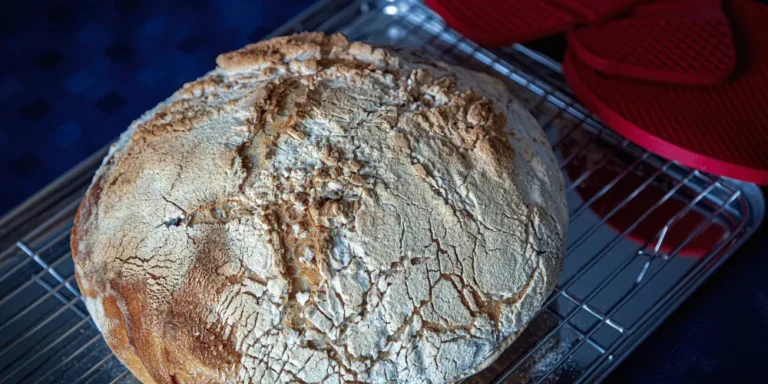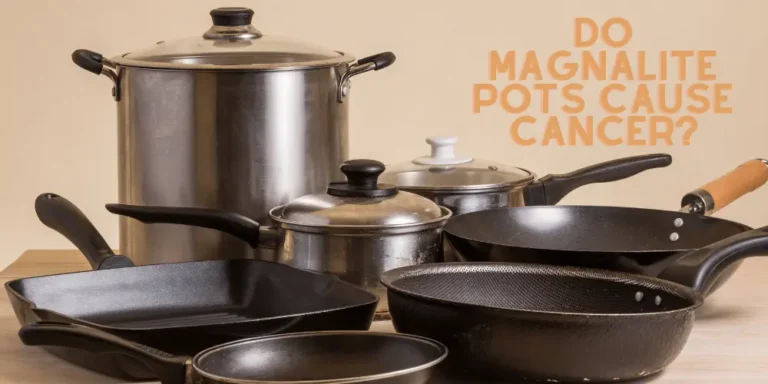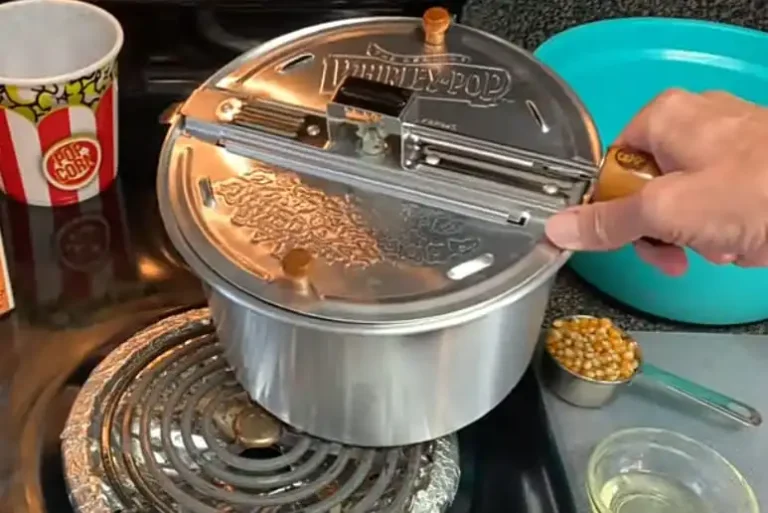Enamel Cast Iron Health Risk: Safety Guide Across Eras
Enameled cast iron pans offer unmatched versatility, performance, and classic beauty for the kitchen. But if your vintage enamelware predates the late 1970s, it could potentially leach concerning levels of lead and other heavy metals into food with each use.
In this comprehensive guide, we’ll cover everything you need to know about identifying and properly handling enamel cookware health risks across all eras of production. You’ll learn to spot signs of wear, find manufacturer dates, assess chemical composition safety, and determine when to stop using vintage enamel pans.
The short answer: While vintage enamelware poses higher risks due to outdated production standards, modern enamel cast iron made after the late 1970s adheres to much stricter regulations on chemical composition and is considered safe for regular cooking when cared for properly.
Throughout this article, we’ll cover:
- Background on enamel cast iron cookware and how it’s made
- The potential health risks of lead and other heavy metals leaching into food
- How to identify vintage high-risk enamel based on manufacturer dates
- Safety advancements in modern enamel production methods
- Proper usage and care tips to minimize risks
- Signs your enamel pan should be fully retired from cooking duty
What Gives Enamel Cast Iron Its Signature Appeal?
Enamel cast iron fuses the heating performance and durability of raw cast iron with a gorgeously smooth, chip-resistant porcelain enamel coating that prevents rusting and requires little seasoning. This marriage of function and form allows enamelware to transition seamlessly from stovetop to oven to tableware.
The glass-based enamel coating locks in heat while resisting damage from moisture and acid foods that can erode and corrode unprotected cast iron. For home chefs, the ease of cleaning, eye-catching colors, and vintage charm of enamelware have much to love compared to traditional cast iron.
Where Potential Health Issues Can Arise
However, the protective enamel layer isn’t invincible to chipping, cracking, and deterioration over years of use. This damage can expose the bare cast iron underneath, allowing it to leach iron and other substances into acidic foods during cooking. For vintage pieces made before strict national regulations were enacted in the late 1970s, the enamel coating itself poses additional health risks.
Up through the mid-1900s, lead was commonly used in enamel production to achieve vivid colors and glossy finishes. We now know that lead exposure poses significant neurological and developmental risks with no known safe level, especially for children. Other heavy metals like cadmium, arsenic, and antimony may also be present depending on the enamel formula and manufacturing standards of the era.
The following sections outline how to identify the highest risk vintage enamel, evaluate condition issues, transition to safer modern alternatives, and implement protective cooking practices no matter what enamel cast iron you use.
Pinpointing Highest Risk Vintage Enamelware
Since production date directly correlates to product safety standards, the first step in identifying potential enamel risks is determining the approximate age of your cookware. Here’s what to look for:
1. Check Underside for Manufacturer Marks
Turn the pan upside down. Engraved logos, numbers, letters, and symbols stamped into the enamel provide clues to the company, country of origin, and decade of production. Research markings online or consult collectors groups to decipher.
The lack of markings suggests older vintage wares. Unmarked enamel often signals:
- Materials and methods used before regulations
- Higher likelihood of lead levels
2. Assess Component Materials and Colors
Vibrant hues like bright red, orange, yellow, green and glossy black enamel signal lead glazing more than muted tones like cream, light blue and white. If metal extends up the sides, that’s another red flag for vintage high lead content rather than safer modern steel composite construction.
3. Take Note of Signs of Age and Use
Extreme smoothness, crazing lines, specks of missing enamel, and lightly worn cooking surfaces indicate many years of use and potential for underlying wear.
Use these visual signals as a preliminary test. If multiple high-risk criteria are present, or if the manufacture date can’t be reliably determined, consider potential health risks elevated. Exercise proper safety precautions outlined later when cooking to minimize hazard exposure.
How Modern Enameling Methods Differ
By the late 1970s, regulations like Proposition 65 in California brought heightened awareness and restricted allowable lead levels in consumer goods including enamelware. Modern manufacturing protocols now call for durability-enhancing tin and boron to achieve bright white bases plus ceramic-based coloring.
While the trace presence of heavy metals can’t be fully ruled out, testing continues to confirm quantities well below safety limits in cookware from all major brands sold over the past 40+ years. That’s welcome peace of mind if you come across “new vintage” enameled cast iron at the thrift store or handed down undiscovered from grandparents’ era kitchenware.
Signs Your Enamelware Should Be Retired
For newer enamel pots and pans as well, remaining aware of wear and tear over years of use can prevent safety issues down the line. Noticeable scratches, chips, cracks or crazing call forgradually discontinuing use rather than risking further deterioration. If old enamel starts noticeably staining or rusting foods during cooking, those are also signals to retire it from hot cooking duty.
Safe Cooking Guidelines for Enamel Cast Iron
When using enamel cast iron, adhering to certain best practices reduces risk of digestive upset or exposure to unhealthy metals that could leach from damaged coatings over time with repeated use.
Cook Acidic Foods Sparingly
Enamel resists acid corrosion far better than raw cast iron, but repetitive exposure still takes a toll. Limit using any enamel pan for tomato sauce, wine braises, vinegar-heavy dishes, or citrus juices. Opt for stainless steel or glass bakeware for longer simmering acidic recipes when possible.
Avoid Metal Utensils
Always use wood, heat resistant rubber, or silicone utensils to prevent scratching and chipping enamel interiors. Never cut foods or stir contents with metal implements.
Skip High Heat Searing
While enameled surfaces can generally handle oven temperatures up to 500°F, refrain from using them to sear meats over direct stovetop heat. Sear properly in stainless steel, carbon steel or iron skillet first instead.
Check Condition Frequently
Make a habit of visually inspecting enamel for new cracks, chips, or bare metal exposure before each use. Discontinue cooking in any pan with moderate to severe signs of deterioration.
By staying mindful of manufacturer origin, assessing current condition, and implementing protective cooking habits, you can feel confident keeping the enamel tradition thriving for years to come. Vintage or modern, few pans offer the same nostalgic style meeting versatile function. Now that you know how to use them safely, enjoy all the delicious meals yet to come from your enamel heirlooms.
Pros of Enamel Cast Iron When Used Properly:
- Gorgeous visual appeal
- Heats evenly like raw cast iron
- Impervious to acidic foods when intact
- Resists staining and rusting
- Easy cleanup compared to iron and steel
Whether you’re circling back to an antique enamel gem rescued from the back of grandma’s cupboard or investing in modern make, I hope this guide gave you added perspective and practical advice for cooking safely with enamel cast iron cookware. Be sure to check out even more tips for identifying eras and brands of vintage enamel on steel and enameled cast iron cookware in our definitive guides.




